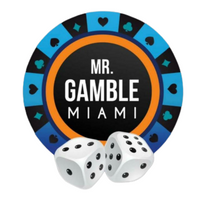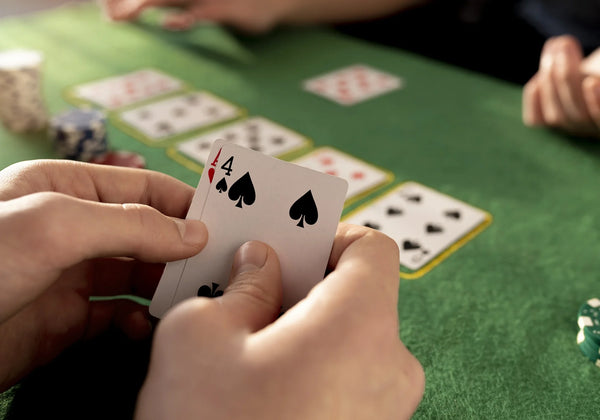Poker Cheating Devices: Unveiling the World of Marked Cards
Understanding Marked Cards
Discover the essence of "marked cards" and delve into their role in poker cheating. These cards bear invisible markings that grant an edge to savvy players. Explore the categories: back marked cards and side marked cards.
Back UV Marked Cards vs. Side Barcode Marked Cards
Uncover the distinctions between the markings on back and side marked cards. Back markings reveal numbers and suits, while side markings feature elusive barcodes, concealing their meaning.
How Do Marked Cards Operate?

UV marked cards operate by using invisible ink markings that are visible under ultraviolet (UV) light. These markings are undetectable to the naked eye but become apparent when viewed under UV light. This method allows players to identify the value or suit of the cards discreetly, gaining an advantage in various card games. UV marked cards work seamlessly with UV light sources or specially designed UV contact lenses, enabling users to discern the hidden markings and make strategic moves during gameplay. Understanding how UV marked cards operate empowers players to utilize this covert advantage effectively in their gaming strategies.
Barcode Marked Cards in Gambling
Dive into the world of barcode marked cards and the poker analyzer system. Discover how these cards, paired with advanced technology, offer insights into the best hands, revolutionizing the gambling experience.
Barcode marked cards operate by concealing data in subtle barcodes along their edges, akin to QR codes. These markings, invisible to the naked eye, require a poker analyzer system to scan and interpret the encoded information. This advanced technology deciphers the barcode data, providing insights into the best hands during gambling sessions. Discover how utilizing these cards, in tandem with a poker analyzer, grants players a significant advantage in predicting game outcomes and making strategic bets.
Gaining an Edge in Every Game
Strategies with Marked Cards
Understand the significance of using marked cards in poker cheating and how they cater to various gambling games. Learn that practice with these devices and tools is key to mastering their functionality.
Embrace the expertise of players like Martin Kabrhel, utilizing barcode marked cards to gain an unparalleled advantage in every round. Sharpen your skills and dominate the table!
Related products
Poker Size Barcode Marked Cards
What is a Marked Deck?
Introduction
When I first started learning about magic, I was fascinated by how magicians and mentalists create such incredible illusions. One of the most intriguing tools they use is the marked deck. A marked deck is simply a deck of cards with secret marks on the back of each card. These marks help the performer to identify the value and suit of each card just by looking at the card back.
How It Works
The marks are often very subtle and cleverly designed to blend in with the card's design. This way, even when the deck is shuffled and spread out, the marks remain hidden from the audience. The opposite side of the card, which shows the value and suit, is easily readable to the performer by glancing at the back. This method allows the magician to perform seemingly impossible tricks with ease, as they can identify any card without ever needing to flip it over.
My Experience
From my personal experience, learning to use a marked deck takes practice, but it's incredibly rewarding. The ability to know the value and suit of a card from just the back of the deck gives you a significant edge in performing tricks. It feels almost like having a superpower. When I first started, I was amazed at how quickly I could master certain illusions once I got the hang of reading the marks. The secret lies in making the reading of the marks look natural, without giving away any hint of what you are doing.
How Does a Marked Deck Work?
Introduction
Understanding how a marked deck functions can be fascinating. There are two main types of systems used in these decks: reader systems and coded systems. These are produced commercially and are designed to be hidden within the back design of the card.
Reader Systems
With reader systems, the marks are usually straightforward. For example, a small "7S" might indicate the 7 of Spades. This type of system involves simply "reading" the back of the card to immediately identify its value and suit. These decks are quite user-friendly because if you know where to look, you can quickly discern the card.
Coded Systems
In contrast, coded systems use more intricate codes and clues. These might involve subtle features like a clock face with a dot in a specific place, corresponding to the number of the card. This makes the design much more discreet but requires more practice to master.
Using both types of systems has given me a deep appreciation for the art of card magic. Whether it's a reader system where you simply read the back or a coded system that uses clever clues, knowing how to use a marked deck can be a powerful tool in any magician's arsenal.
How Can You Identify a Marked Deck?
Introduction
One of the most intriguing aspects of card magic is knowing how to spot a marked deck. This skill can be incredibly useful, whether you're a magician or just curious about the tricks behind the magic. There are several ways to identify a marked deck, and they often involve close observation and a few clever techniques.
The Riffle Test
A quick and effective method is to "take it to the movies" by performing the riffle test. This involves flipping through the entire deck quickly with your thumb or finger while watching the card backs closely. As you do this, look for any changes in the design that might indicate the marking system used. Some marked decks are more obvious than others, depending on how the markings are integrated into the card backs.
From my personal experience, the riffle test is a reliable way to spot a marked deck. The first time I tried it, I was amazed at how subtle some marking systems can be. With practice, you can become adept at spotting even the slightest changes in the design, making it easier to detect if a deck has been marked.







